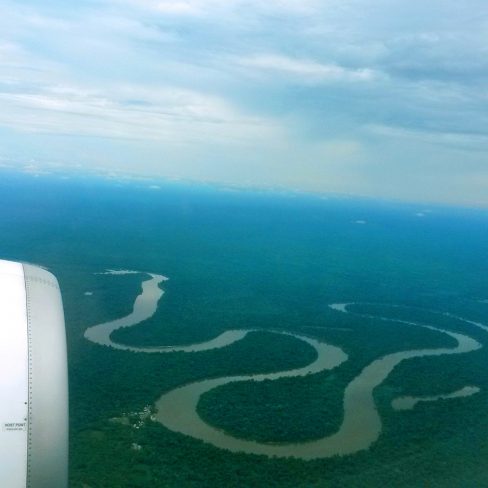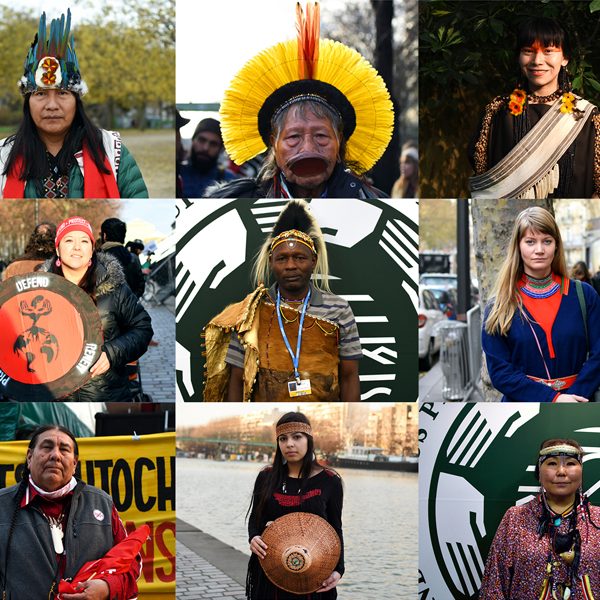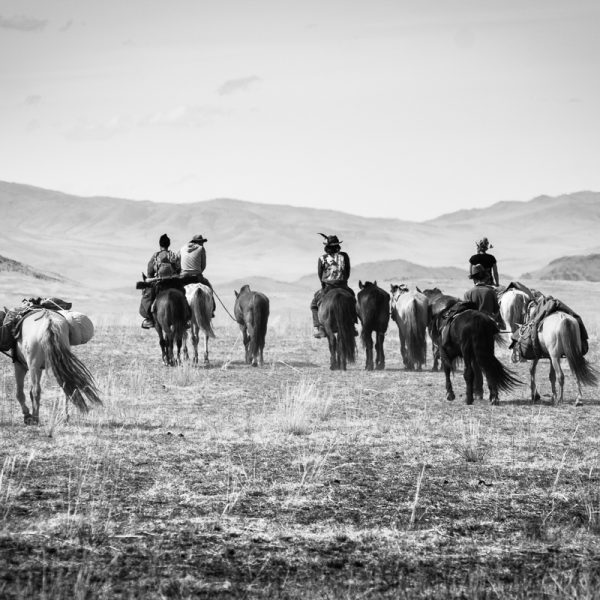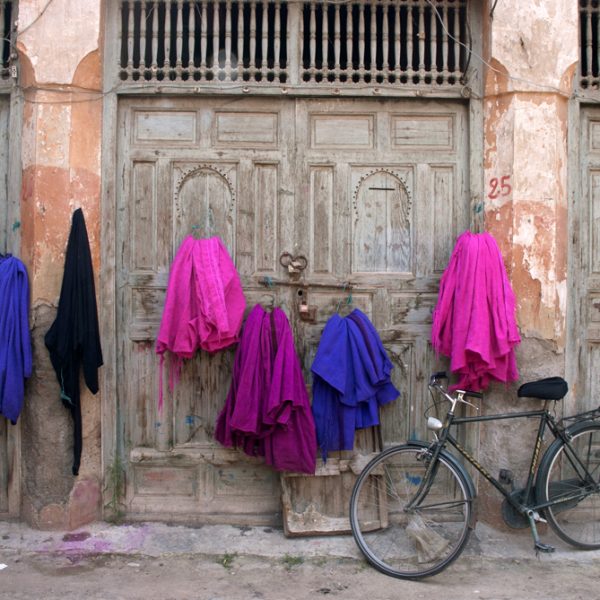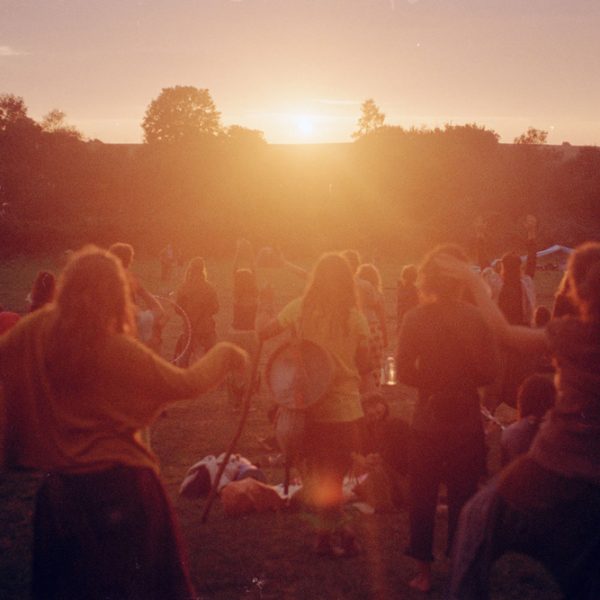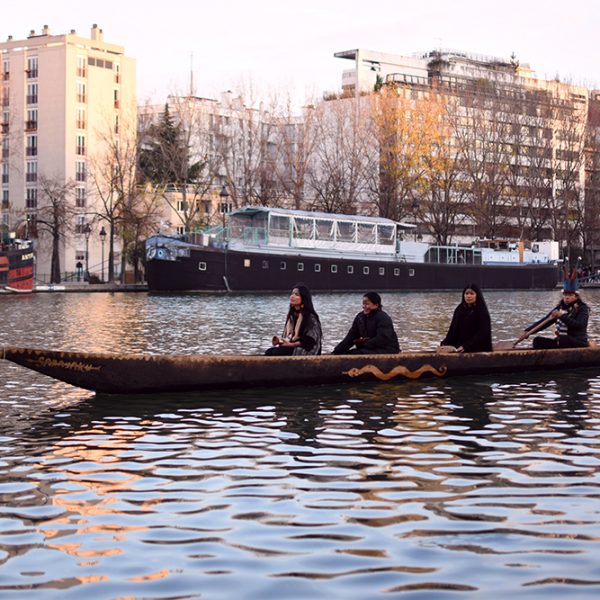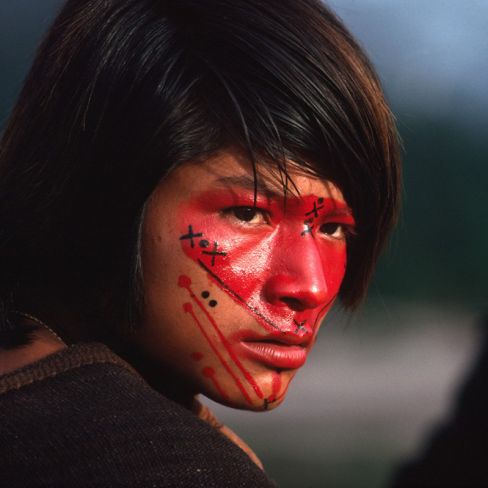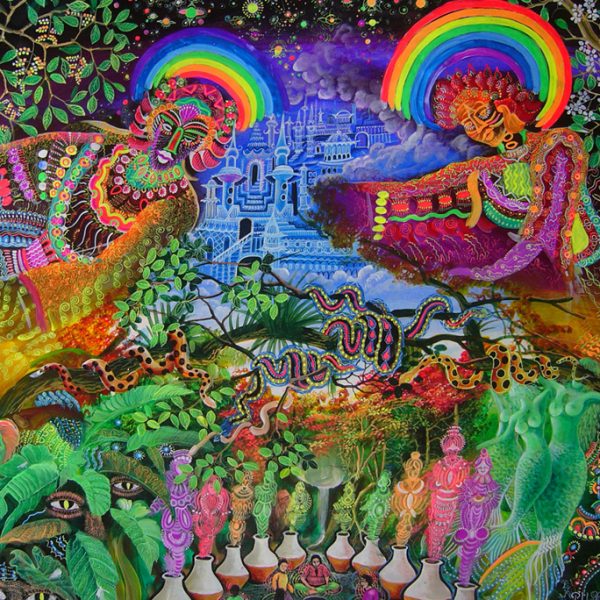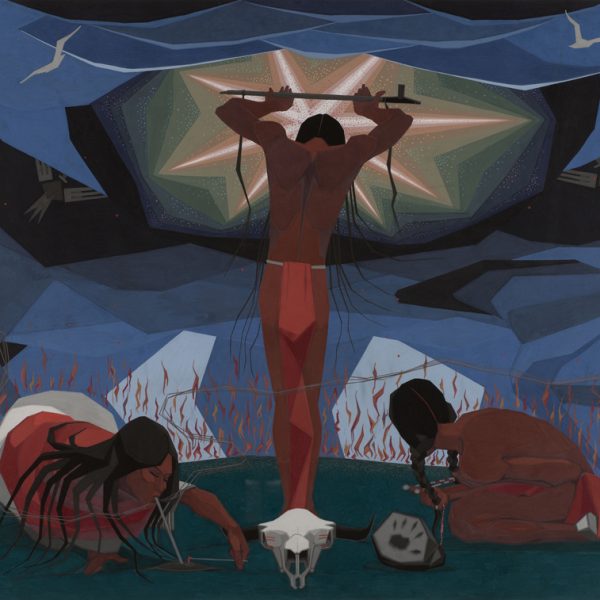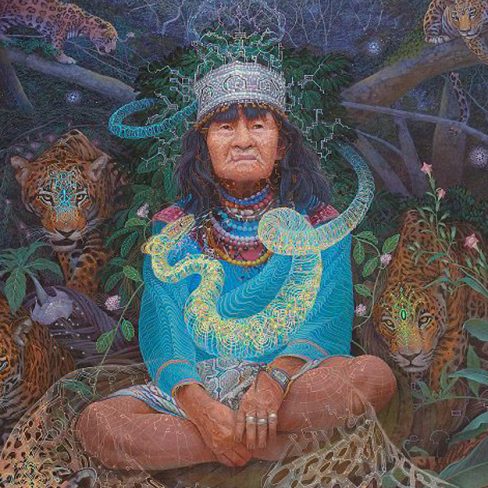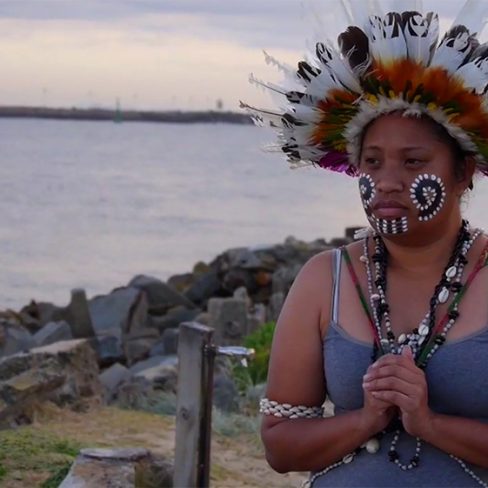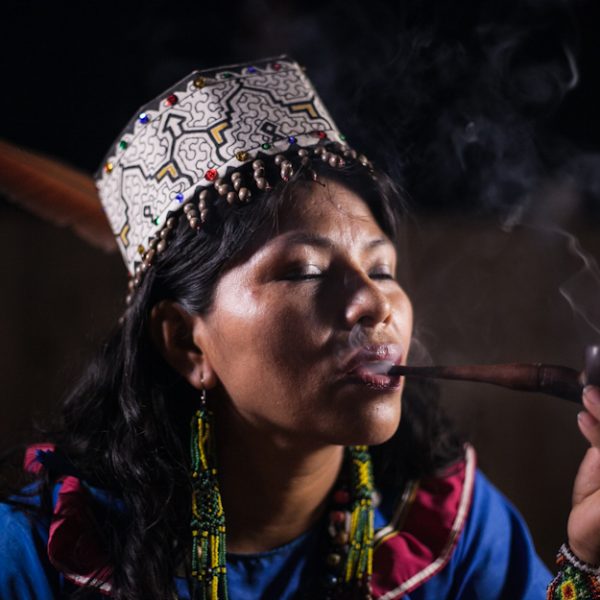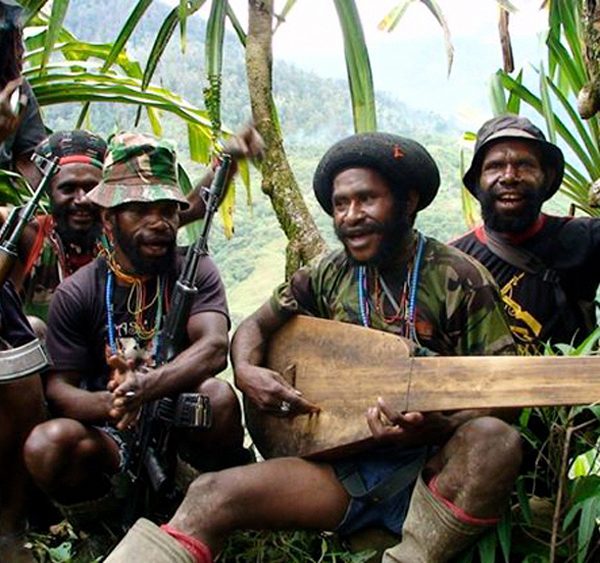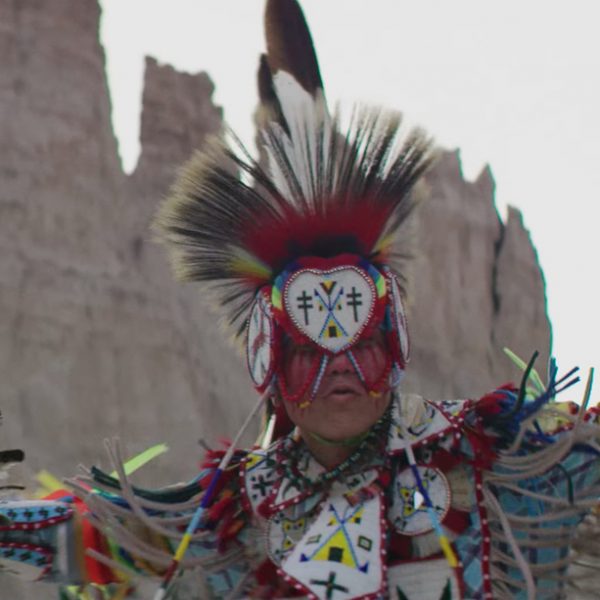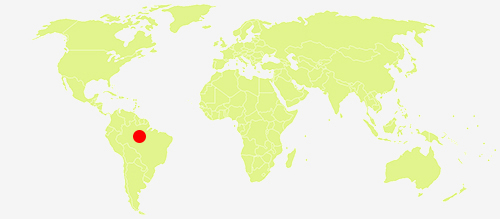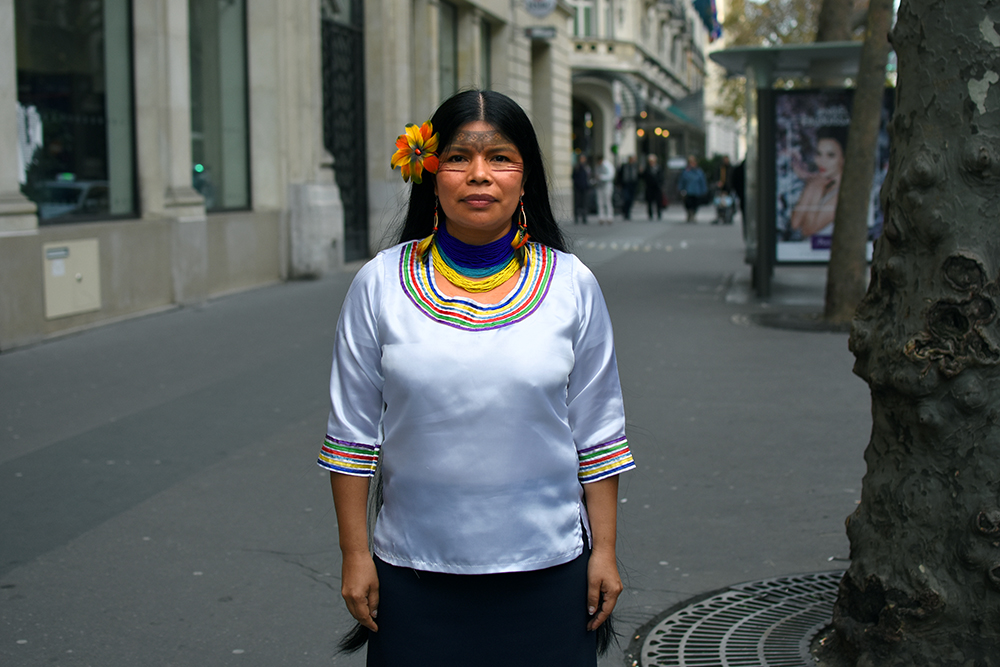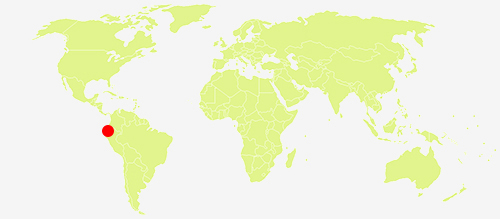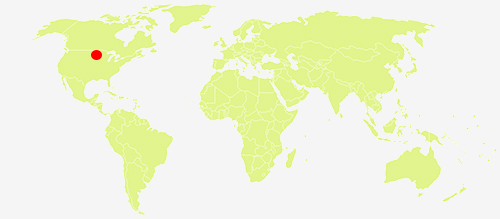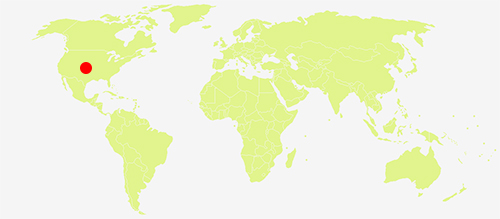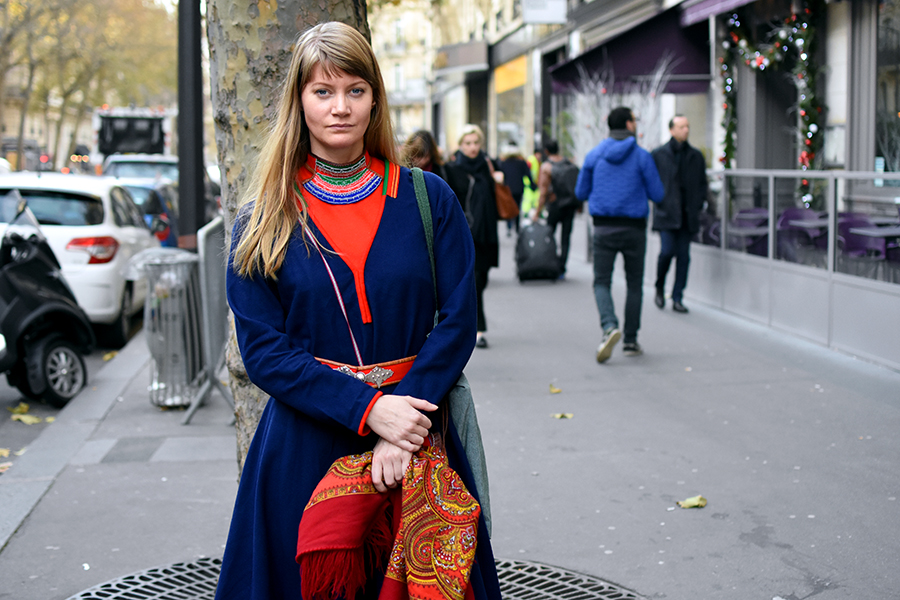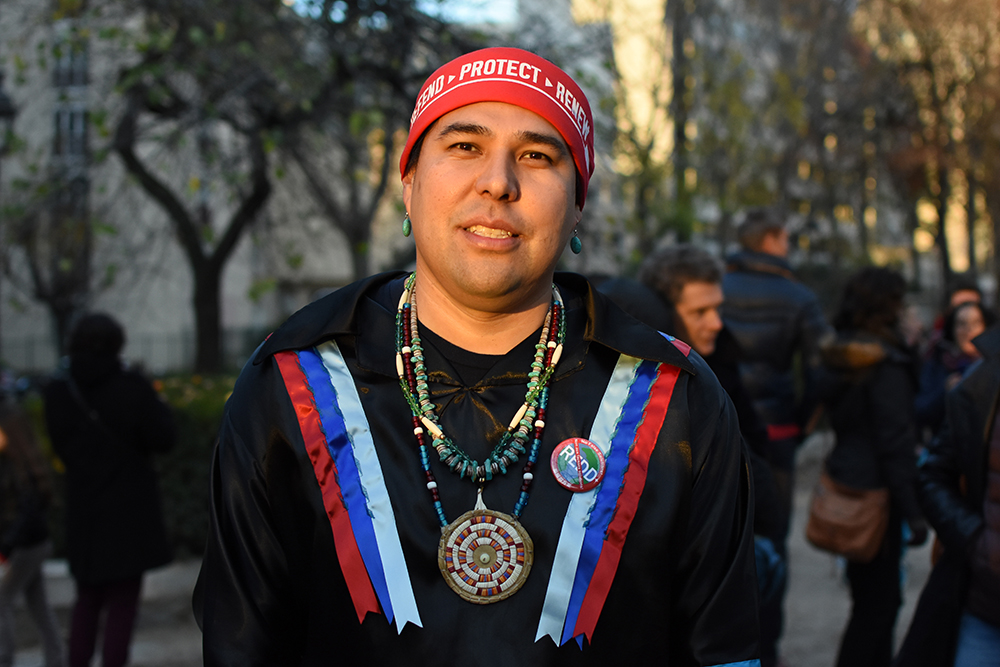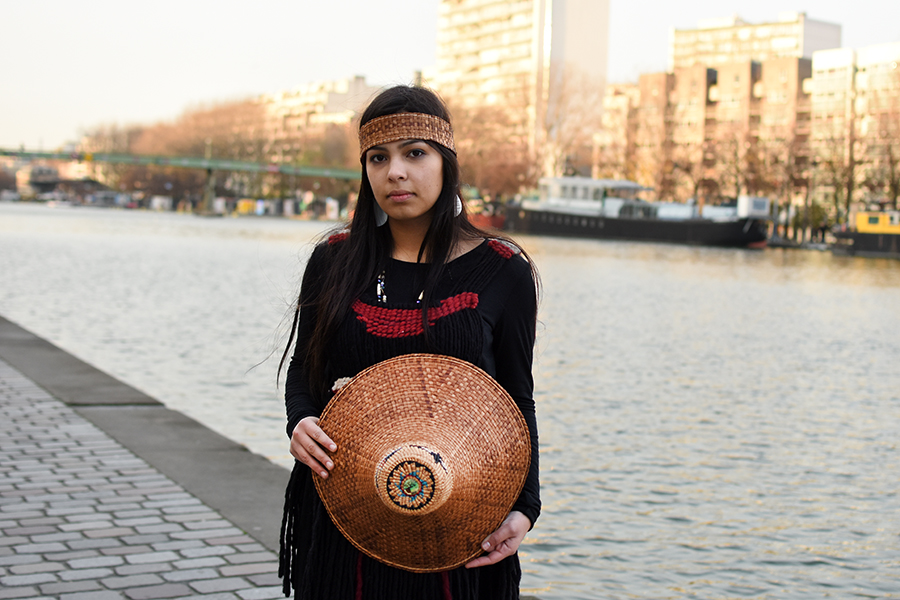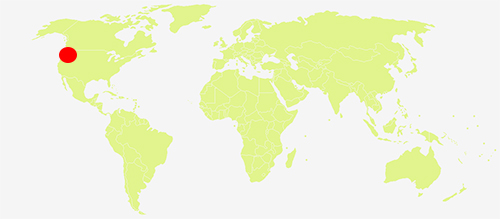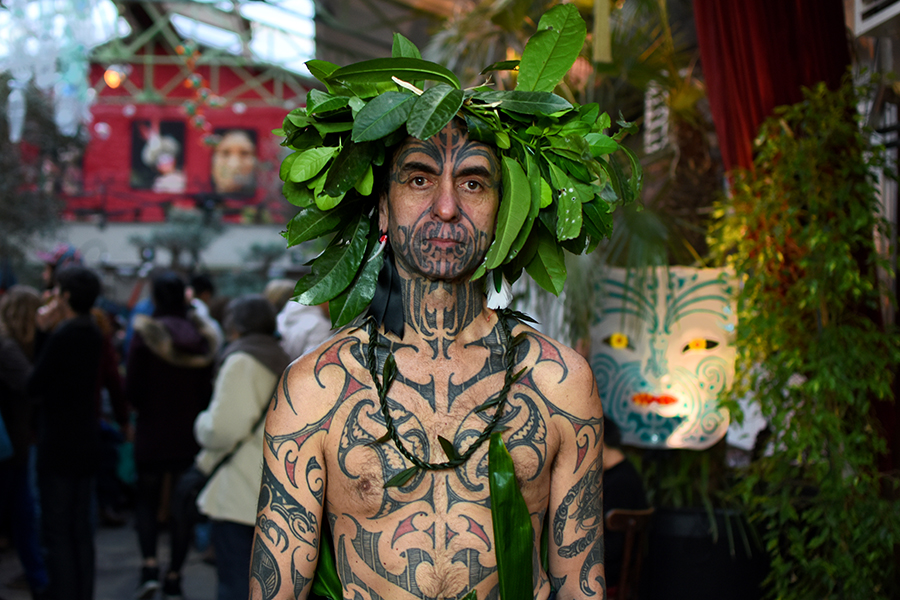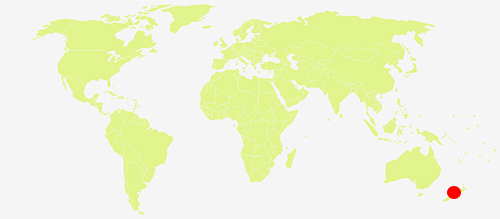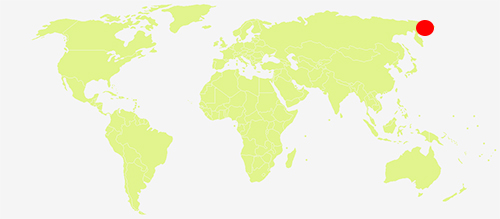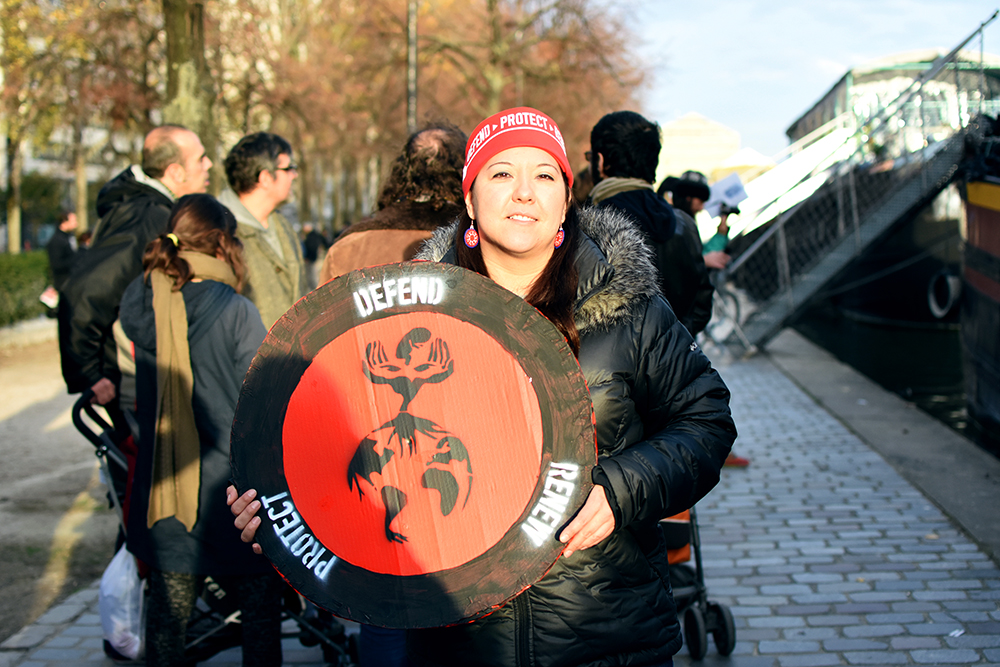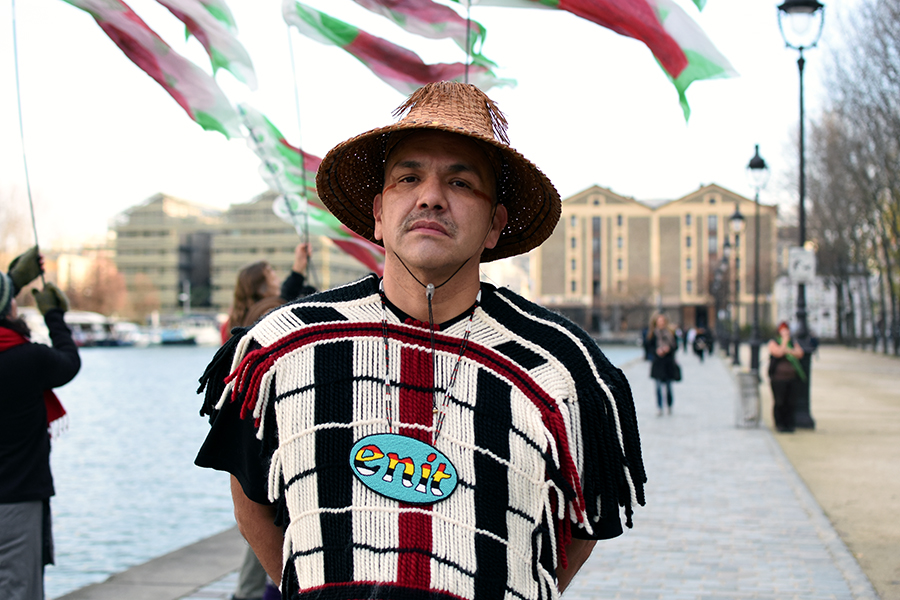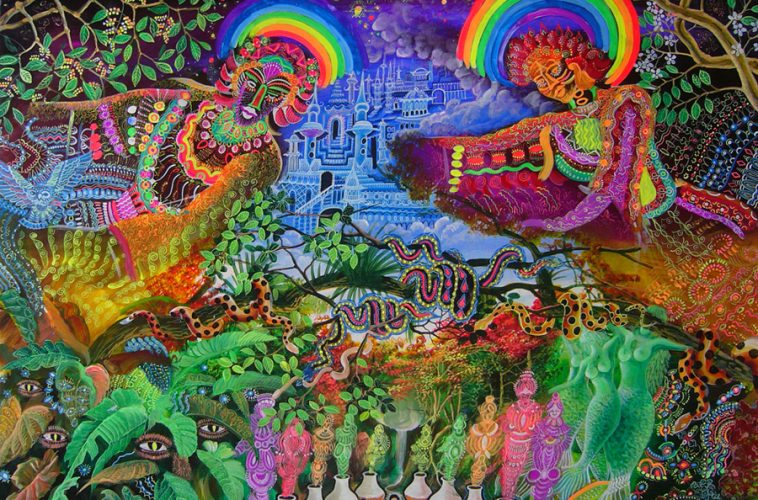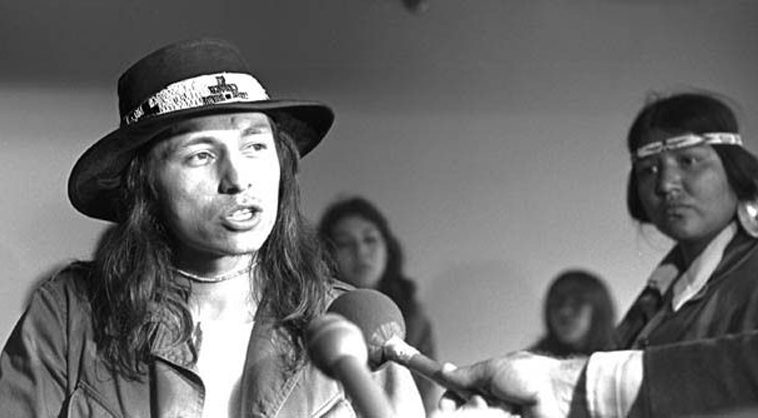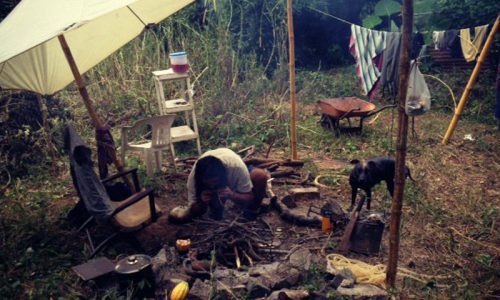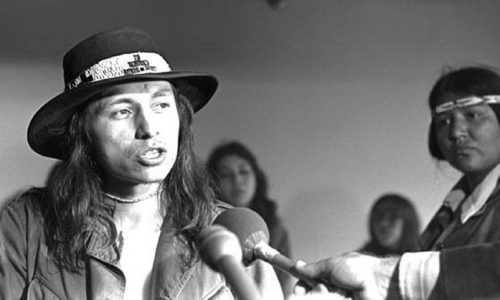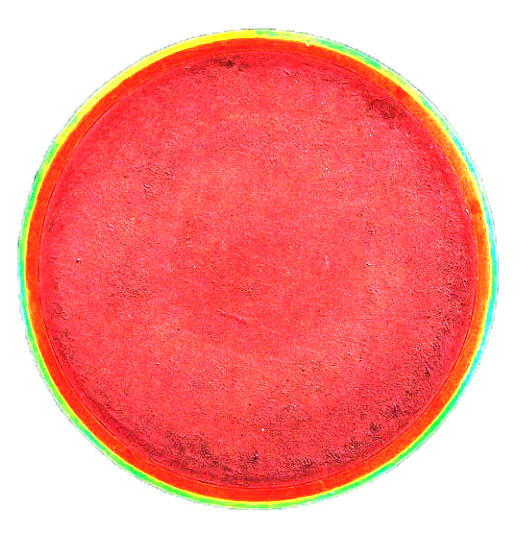INDIGENOUS VOICES On Climate Change, From The Arctic To The Amazon
A call to action from 15 Indigenous leaders and activists from around the world
29 Apr 2016
Portraits and interviews by Sophie Pinchetti
With Special Thanks to Catriona Rainsford – Spanish Translation & Mira Silvia – Portuguese Translation
While world leaders celebrated the signing of the COP21 Paris Climate Agreement a few days ago, The Third Eye is celebrating the voices, visions and demands of leaders and activists from frontline and indigenous communities. From the Amazon to the Arctic, they came to Paris for the United Nations Climate Change conference to share the stories from their home and to call for deep systemic change and climate justice. This exclusive portrait series was created by The Third Eye during the COP21 in Paris to document the messages of Indigenous leaders and activists in response to one simple yet giant question, which The Third Eye asked them during the encounters photographed here:
“What is your most important message on climate change for today and beyond?”
As the best guardians of the natural world, the original conservationists, indigenous peoples play a fundamental role in defending the global climate. Indigenous peoples worldwide number between 300-500 million, embody and nurture 80% of the world’s cultural and biological diversity, and occupy 20% of the world’s land surface.
But for the past 21 years at the United Nations Climate Change conference, indigenous delegates have been merely accredited as “observers”, and kept outside of the closed door negotiation sessions, which at the COP21 included Indigenous rights being axed from the operative text of the Accord.
The Third Eye was on the ground to join in the call for the respect of Indigenous Rights and Nature’s Rights, and climate solutions based on principles of justice, peace and sustainability.
CHIEF RAONI METUKTIRE
Amazonian leader from the Kayapo tribe, Brazil
“We are destroying nature to our enormous peril, we must stop. We indigenous peoples are on the frontline protecting nature and we are calling on governments to hear us and follow our lead. We have a voice that continues to speak loudly to put an end to this destruction and all of you as well have a role to play. We all need nature to survive and it is fundamental that we protect her. My struggle is for the future of humanity.”
Raoni Metuktire is an internationally renowned defender of the Amazon rainforest and spokesperson for Indigenous peoples’ rights and the rights of nature. He has tirelessly dedicated his life to advancing the rights of Brazil’s first peoples and protecting the environment. Raoni has notably denounced large-scale development projects such as the Belo Monte hydroelectric dam on the Amazonian Xingu river, which threaten one of the most biologically diverse places on the planet and the survival of Indigenous peoples who depend upon the river and land.
PATRICIA GUALINGA
Kichwa leader from Sarayaku in the Amazon, Ecuador
“We have to unite to fight everything that is happening. It’s time to break through all the prejudices that disunite us. It’s a time of union. We from the Amazon, from India, from Indonesia, from all parts of the world – we need to unite forces and fight, because the destiny and future of the world is also part of our responsibility. We are responsible, and if we leave it in the hands of the governments, this is not going to work. We have to act and act now. We don’t have time to say others should do it, it’s time to act ourselves.”
Patricia is a prominent indigenous Kichwa leader of Sarayaku, a community of about 1,200 indigenous people who live in the central Ecuadorian Amazon. The Sarayaku people have been successfully defending their territory from resource extraction and have come to symbolise indigenous resistance against oil, mining and logging throughout the Amazon. The Sarayaku people have denounced a newly signed oil contract between the Ecuadorian government and Chinese oil corporation Andes Petroleum, which includes two controversial oil blocks overlapping with their territory and the territory of the Sápara tribe.
TOM GOLDTOOTH
Dine and Dakota activist from Minnesota, USA
& Executive Director of the Indigenous Environmental Network
“The world leaders, corporations and the financial institutions have to reevaluate what their relationship is to the sacredness of Mother Earth. There’s too much war with Mother Earth, there’s too much battling for clean water and clean air. We should not be in that situation. We’re here to remind the world and these world leaders that they have to to have peace of mind with themselves and peace of mind with Mother Earth. Mother Earth is sacred, the Creator gave us these things to appreciate and to respect. So we’re here to express love and compassion of the gifts that the Creator has given us, that’s very important.”
Tom Goldtooth is an environmental justice grassroots leader in North America from the Dine & Dakota tribes in the US. He is a prominent activist of the Indigenous Environmental Network (IEN), an alliance of grassroots Indigenous Peoples whose mission is to protect the sacredness of Mother Earth and to address environmental and economic justice issues. Tom is a policy adviser to indigenous communities on environmental protection and more recently on climate policy, as well as being a member of numerous climate justice initiatives and part of the International Rights of Nature Tribunal Steering Committee.
BERLIN DIQUES RIOS
Representative of the Amazonian Ashaninka tribe’s Binational Congress, Peru
“We hope that the governments of all the Amazon states and the whole world place importance on hearing the voices of Indigenous peoples. We want our presence here to show the world that Indigenous peoples have been conserving the environment and the forests for thousands of years, and all humanity owes its existence to that.”
Berlin (Jiribati) Diques Rios is a leader of the Ashaninka tribe from the community of Betania, Rio Tambo in the central Peruvian Amazon. Indigenous people represent 40% of the Peruvian population, with the Ashaninka tribe accounting for 26% of the indigenous population recorded in the Peruvian Amazon. Jiribati is known for his commitment to protecting the ancestral territories and rights of his people. He worked for the creation and recognition of the Communal Ashaninka Reserve in the national park of Otishi and now continues to work on its management. Jiribati is part of the organising committee for the creation of the Ashaninka national organisation.
CASEY CAMP-HORINEK
Ponca activist from Oklahoma, USA
“The message from my home is to stop the environmental genocide of Indigenous people. My people, the Ponca people of Oklahoma, are dying as a result of the practices of the extractive industry. Stop the commodification of all that is keeping life going on our Mother Earth. One should not be able to buy and sell the air, the water, and the Earth or anything that moves within the natural laws.”
Casey is a long-time native rights activist, environmentalist from the Ponca Nation of Oklahoma. Casey is a traditional Drumkeeper for the Ponca Pa-tha-ta, Woman’s Scalp Dance Society and Indigenous Environmental Network representative, who has been leading grassroots community efforts to educate and empower both Native and non-Native allies on environmental and civil rights issues. Camp recently joined in a historic march in Ecuador as a member of the WECAN delegation, standing in solidarity with Amazonian relatives of seven tribes to denounce the Ecuadorian government’s latest oil deal and to call for the defense of Indigenous rights and the environment.
MANARI USHIGUA KAJI
Leader and shaman of the Sápara tribe of the Amazon, Ecuador
“We, Indigenous peoples, are going to continue taking care of the forest just as it has been until now. We don’t care about the states that don’t want to include the rights of Indigenous peoples. Although they don’t recognise us, we are going to continue fighting, we’re going to continue resisting against all the transnational businesses that want to exploit oil in our territory. We want the oil to stay in the ground and other resources like uranium to be kept in the ground.”
Manari Ushigua is the leader of the Sápara, a small threatened tribe of 500 living in the Ecuadorian Amazon rainforest, which has official recognition by UNESCO as an “Intangible Cultural Heritage of Humanity”. Manari Ushigua has denounced a newly signed oil contract between the Ecuadorian government and Chinese oil corporation Andes Petroleum, which includes two controversial oil blocks overlapping with the territory of the Sápara indigenous people.
JOSEFINA SKERK
Vice President of the Sami Parliament, Sweden
“Indigenous peoples have to be at the tables where the decisions that are informing their lives are taken.”
Josefina is the Vice President of the Sami Parliament, the only recognised Indigenous people of Europe who have lived in the Arctic area of Sápmi for thousands of years. Today this area encompasses the northernmost areas of Sweden, Norway, Finland and Russia. Josefina lives in a village of about 50 people on the coast of northern Sweden and has been active in Sami politics from a young age. The Sami are on the front line of climate change yet climate mitigation measures are often implemented without their input. In most recent news, the Sami people in Finland are facing an unprecedented assault on their rights and territory as a new Forestry Act threatens to level swathes of the last boreal forest in Europe.
DAVID YATOR KIPTUM
Local leader and activist of the Sengwer tribe from Kenya
“With respect to our current situation, where we are being forcibly evicted from our ancestral lands in the forest, I want to make it clear that evictions are not a solution to climate change nor are they a solution to deforestation. As far as the forest indigenous communities are concerned in Kenya, the only solution to climate change is securing the rights of forest indigenous communities to live, manage and own their ancestral lands in protected areas of the forest.”
David Yator Kiptum is a local leader and spokesperson of the Sengwer tribe, who have been the guardians of the Embobut forest and Cherangany Hills in western Kenya since time immemorial. Yator is Chairperson for Sengwer Indigenous Peoples Coordinating Committee and a member of the Forest Indigenous Peoples Network. In recent decades, the Sengwer have been illegally evicted and persecuted in the name of conservation, accused of being the cause of deforestation and labelled by the Kenyan government as ‘squatters’ in their own ancestral lands.
DALLAS GOLDTOOTH
Dine / Dakota activist from Minnesota, USA
& Keystone XL Campaign Organiser with the Indigenous Environmental Network
“We don’t have time as people to talk about false solutions. We really have to take a critical look at keeping fossil fuels in the ground and making a just transition towards renewable energy production. We have to heed the voices and the concerns and implement the solutions being offered by front line community-based peoples.”
Dallas is an activist from North America and the Keystone XL Campaign Organiser with the Indigenous Environmental Network. He is a Dakota cultural/language teacher, a co-founder of the Indigenous comedy group, The 1491s, and a poet, traditional artist, powwow emcee, and comedian. Dallas has led campaigning efforts against the proposed Keystone XL oil pipeline, a $7 billion tar sands oil pipeline which would run 2,000 miles through the American heartland crossing the country’s largest freshwater aquifer to reach the Texas Gulf Coast. Citing climate change, Obama rejected the construction of the Keystone XL oil pipeline in late 2015.
KAYA GEORGE
Lummi Nation youth activist from Washington, USA
“We are still here as Native people. We are strong, we are still fighting for our Mother Earth. It is our birthright to protect our mother and to protect the ocean, the land and the sky and all the animals.
Kaya George is an Indigenous youth activist and was part of the Lummi Nation’s youth delegation at the COP21. The Lummi call themselves the Lhaq’temish, or People of the Sea. For over 12,000 years, the Lummi tribe has thrived in the lands of the Northwest and depended upon salmon. But in recent decades, the salmon has been disappearing at an alarming rate because of overfishing and destruction of habitat. The Lummi people are fighting to protect the salmon, which they see as intertwined with the health of their culture, identity, economy and lands.
GEORGE NUKU
Māori artist from New Zealand
“The most important thing is to listen to each other and to see each other.”
George Nuku is a highly regarded Māori Artist working in stone, bone, wood, shell and polystyrene. Carrying on the tradition of his people handed down through generations for thousands of years, Nuku’s works range from delicate jade and pearl amulets to stone sculptures and massive Polynesian demi-gods and Māori cultural heroes.
OLGA LETYKAI CSONKA
Chukchi shaman, activist, dancer and singer from Chukotka, Russia
“Our message is for our voices to be heard and that we must participate in the events going on with climate change because our traditional way of life is linked to the climate. We are the first to be impacted by this tragic event.”
Olga Letykai Csonka is a member of the Indigenous Chukchi people, who have lived for centuries in the northeastern corner of Siberia on the Chukchi Peninsula. She works with organisations to ensure that minority rights are heard, traditional hunting issues are not ignored, and climate concerns are addressed. Olga is also an internationally renowned performer, known for her traditional ritual dances which express a deep bond with and respect for nature, and her masterful throat singing – one of the oldest forms of singing.
KANDI MOSSETT
Mandan-Hidatsa-Arikara activist from North Dakota, USA & Native Energy
and Climate Campaign Organizer for the Indigenous Environmental Network
“Eagle Woman is my native name. We are here to defend, protect and renew. Particularly for me, what that means at home, is that fracking is a false solution to the climate crisis.”
Kandi Mossett is a native activist from North Dakota and the Indigenous Environmental Network’s lead Native Energy and Climate Campaign organiser, focusing on raising awareness about the environmentally & socially devastating effects of hydraulic fracturing on tribal lands. Mossett grew up on the Fort Berthold Reservation in North Dakota and today she is also involved in international advocacy work to defend Indigenous Rights and the Rights of Nature. She’s also working on founding a non-profit organisation, which teaches food sovereignty and encourages reservations in Montana, North Dakota, and South Dakota to adopt renewable energies.
FREDDY LANE
Lummi Nation activist from Washington, USA
“We are salmon people and the salmon have no voice, they cannot speak up against corporations. So it is our message, from our elders, our veterans, our families, our youth, that the Earth is alive.”
Freddy Lane is an activist from the Lummi tribe, born and raised on the Lummi Indian Reservation in northwestern Washington State in the United States. Freddy was part of the Lummi delegation to the COP21 where the group screened the documentary film ‘Huli Ta Tum Uhw: The Earth is Alive’ highlighting the Lummi people’s connection to salmon and their fight to save this threatened species. In most recent news, the Lummi Nation has prevailed in its fight to block the largest coal port ever proposed in North America, at Cherry Point.
MARISHORI SAMANIEGO PASCUAL
Representative of the Amazonian Ashaninka tribe’s Binational Congress, Peru
“As a woman, the message I would give is that the problem is not lack of laws or solutions, but of implementation. There is no political will. Destroying the indigenous lifestyle destroys the Amazon – the governments and Amazon states must recognise that Indigenous peoples are living, ancient actors conserving the environment.”
Marishori is an Indigenous activist from the central Amazon Peru in the Junín Region. Marishori is part of the organising commission for this year’s 2nd Binational Congress of the Ashaninka from Brazil and Peru. Marishori works as a translator, interpreter of the Ashaninka language credited by Peruvian Ministry of Culture and a cultural expert specialising in the protection and preservation of Ashaninka culture. She has notably organised many events around the world to draw attention to Amerindian culture in Peru and parts of the world such as Europe and the Middle East.





